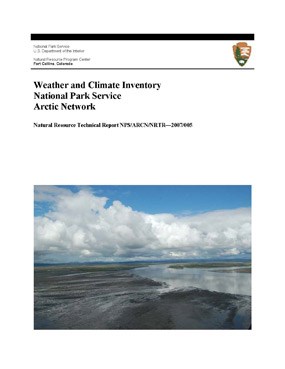
Executive Summary Paragraph 1 Climate is a dominant factor driving the physical and ecologic processes affecting the Arctic Inventory and Monitoring Network (ARCN). Climate variations are responsible for short- and long-term changes in ecosystem fluxes of energy and matter and have profound effects on underlying geomorphic and biogeochemical processes. Apparent climate changes are especially evident in high-latitude regions such as the ARCN. Temperature increases in the ARCN over the last several decades will likely have significant impacts on permafrost in the ARCN, including alterations in characteristics such as soil moisture, soil temperature, and soil respiration rates. These in turn can alter rates of nutrient inputs into the ARCN ecosystems, which could have far reaching impacts on the biological community of the ARCN. Long-term changes in climate are also associated with reductions in sea ice cover near coastal ARCN park units, and the northward and coastward migration of treeline. Drier interior areas of the ARCN are prone to fires during the late spring and early summer months, influencing vegetation structure and composition, permafrost dynamics, nutrient cycling, carbon loss/gain, primary productivity and biodiversity in these areas. Because of its influence on the ecology of ARCN park units and the surrounding areas, climate was identified as a high-priority vital sign for ARCN and is one of the 12 basic inventories to be completed for all National Park Service (NPS) Inventory and Monitoring Program (I&M) networks.
For full report click here 2175 KB |
Last updated: April 30, 2018
